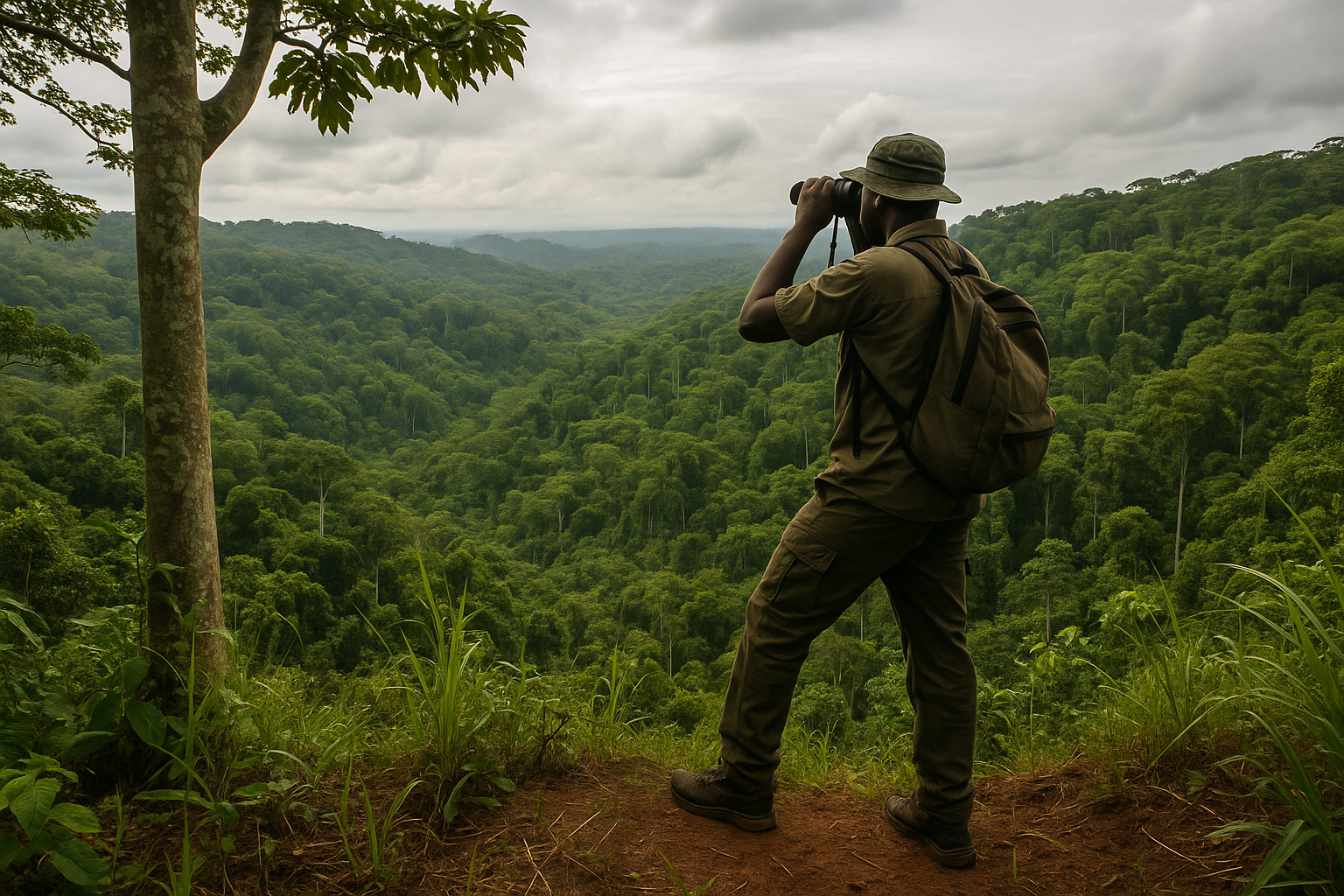Protecting Congo’s Forests: New Metrics Tie Climate Finance to Real Conservation Gains
The World Bank's new framework offers the Republic of Congo a science-based, performance-linked model to access climate finance by aligning deforestation outcomes with economic and environmental pressures. It aims to reward proactive forest conservation in high-forest, low-deforestation countries through robust, data-driven KPIs.

A new World Bank Policy Research Working Paper, authored by Dieter Wang, Philipp Kollenda, Veerle de Smit, Kanta Kumari Rigaud, Tsegaye Ginbo Gatiso, and Alexander Golub from the World Bank’s Environment Global Department, provides a transformative roadmap for linking climate finance to forest protection outcomes in the Republic of Congo (RoC). Supported by institutions like the Central African Forest Initiative (CAFI), Climate Investment Funds (CIF), and the European Space Agency (ESA), this research introduces a rigorous and science-based mechanism to address one of the biggest challenges for High-Forest, Low-Deforestation (HFLD) countries: how to access substantial forest finance despite having little historical deforestation to “reduce.” The RoC, blanketed by forests across nearly 70% of its territory, is home to the world’s largest tropical peatland complex and vast swaths of dense moist forest. Its peatlands alone store up to 10.4 billion tons of carbon, more than double the carbon stored in its above-ground forests. Yet, even with this tremendous environmental capital, RoC remains underfunded and vulnerable to economic and climatic pressures that could trigger significant forest loss.
Why Traditional Metrics Fail HFLD Countries
Historically, climate finance instruments like REDD+ have rewarded countries for reducing high deforestation levels. For HFLD nations like RoC, which already maintain low deforestation rates (around 0.1% annually), these frameworks offer little reward and create a perverse incentive: to qualify for funding, a country must first deforest, then reduce. The World Bank paper critiques this flawed model and proposes an alternative. At the heart of their solution is a novel Key Performance Indicator (KPI) that measures avoided deforestation not against historical averages but against dynamic forecasts of deforestation pressure. Using the REACH (Relative Evaluation and Benchmarking) model, the team integrates factors such as global timber prices, agricultural exports, the real effective exchange rate, urbanization trends, and climate data (like drought intensity via the SPEI index) to predict expected deforestation under prevailing conditions. Any divergence between this forecast and the observed outcome can then be attributed to policy performance, rewarding actual effort and avoiding greenwashing.
A Smarter Way to Track Forest Performance
The KPI is designed for use in modern financing tools, such as Sustainability-Linked Bonds (SLBs) and Sustainability-Linked Loans (SLLs), where financial terms, including interest rates, are tied to sustainability performance. Unlike green bonds, which require tracking earmarked expenditures, these instruments allow general-use proceeds but rely on verified outcomes. By utilizing satellite-based geospatial data from sources such as the Tropical Moist Forests (TMF) dataset, the model ensures transparency, credibility, and accountability. From 2017 to 2023, observed deforestation in RoC remained significantly lower than expected, even amid rising commodity prices and population growth, indicating strong potential for performance-linked financing. Conversely, in years like 2010–2013, when global timber prices surged, deforestation exceeded the benchmark, illustrating the model’s responsiveness to real-world economic dynamics.
The study also introduces the FAB (Feasibility and Ambitiousness) framework, used to set performance targets that are both historically achievable and forward-looking. For example, business-as-usual projections suggest that without policy interventions, RoC could lose 280,000 hectares of forest by 2030. However, based on peer HFLD countries like Gabon, Guyana, and Suriname, the paper concludes that it is feasible, and highly ambitious, for RoC to reduce that loss to below 68,000 hectares over the same period. This target not only reflects a meaningful improvement over likely outcomes but also aligns with what other nations have achieved under similar conditions.
Logging Concessions: Threat or Opportunity?
A deep dive into RoC’s Sangha and Likouala provinces offers a real-world test case for the proposed model. These provinces, covering one-third of the country’s land area, contain some of its most undisturbed forest and peatlands but have seen a rise in logging concessions in the last decade. The study identifies 17 concession areas that now span more than 70,000 square kilometers. While logging can pose risks, the data shows that with reduced-impact practices and strict governance, it is possible to manage these forests sustainably. In 2023, deforestation in Sangha and Likouala fell to just 601 and 668 hectares respectively, some of the lowest levels in years. The paper also notes that logging-related deforestation in these areas is particularly sensitive to global timber prices, underscoring the need for smart policies that insulate forest management from economic shocks. REDD+ initiatives, combined with sustainable certification and income diversification programs, are proving essential in these high-stakes forest frontiers.
Transitioning from Oil Without Sacrificing Forests
RoC’s economy has long been dominated by offshore oil, which accounted for over 34 percent of GDP in 2021. This oil dependence has inadvertently helped limit deforestation by drawing labor and capital away from land-intensive sectors like agriculture, a classic case of the Dutch disease. But as RoC aims to diversify its economy, including growing its agriculture and forestry sectors, deforestation pressure may increase unless new income streams are explicitly tied to sustainable practices. The study highlights that non-oil GDP growth is positively correlated with deforestation, while oil-linked GDP shows a negative correlation. This paradox underscores the importance of integrating forest protection into the country’s development strategy. Using oil revenues today to finance sustainable transitions, through KPI-linked climate instruments, could create a pathway where growth and conservation are not at odds.
The report offers a breakthrough framework for mobilizing large-scale climate finance in forest-rich nations like the Republic of Congo. By shifting the narrative from punishment for historical inaction to rewards for proactive conservation, it provides a timely and practical solution for countries facing growing environmental and economic pressures. The study does more than diagnose a problem; it prescribes a replicable, data-driven approach that could redefine how the world values and finances forest protection.
- FIRST PUBLISHED IN:
- Devdiscourse










